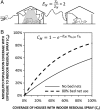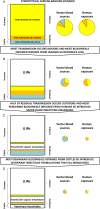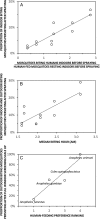Measuring, manipulating and exploiting behaviours of adult mosquitoes to optimise malaria vector control impact
- PMID: 28589023
- PMCID: PMC5444085
- DOI: 10.1136/bmjgh-2016-000212
Measuring, manipulating and exploiting behaviours of adult mosquitoes to optimise malaria vector control impact
Abstract
Residual malaria transmission can persist despite high coverage with effective long-lasting insecticidal nets (LLINs) and/or indoor residual spraying (IRS), because many vector mosquitoes evade them by feeding on animals, feeding outdoors, resting outdoors or rapidly exiting from houses after entering them. However, many of these behaviours that render vectors resilient to control with IRS and LLINs also make them vulnerable to some emerging new alternative interventions. Furthermore, vector control measures targeting preferred behaviours of mosquitoes often force them to express previously rare alternative behaviours, which can then be targeted with these complementary new interventions. For example, deployment of LLINs against vectors that historically fed predominantly indoors on humans typically results in persisting transmission by residual populations that survive by feeding outdoors on humans and animals, where they may then be targeted with vapour-phase insecticides and veterinary insecticides, respectively. So while the ability of mosquitoes to express alternative behaviours limits the impact of LLINs and IRS, it also creates measurable and unprecedented opportunities for deploying complementary additional approaches that would otherwise be ineffective. Now that more diverse vector control methods are finally becoming available, well-established entomological field techniques for surveying adult mosquito behaviours should be fully exploited by national malaria control programmes, to rationally and adaptively map out new opportunities for their effective deployment.
Conflict of interest statement
Competing interests: None declared.
Figures




References
-
- WHO-UNICEF. Achieving the malaria MDG target: reversing the incidence of malaria 2000–2015. Geneva, Switzerland: World Health Organization and the United Nations Children's Fund, 2015:40p.
-
- Durnez L, Coosemans M. Residual transmission of malaria: an old issue for new approaches. In: Manguin S, ed. Anopheles mosquitoes—new insights into malaria vectors. Rijeka: Intech, 2013:671–704.
Grants and funding
LinkOut - more resources
Full Text Sources
Other Literature Sources
Medical
